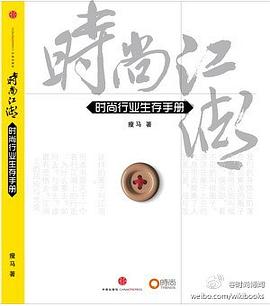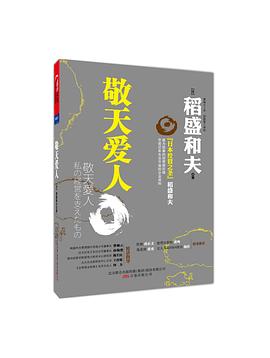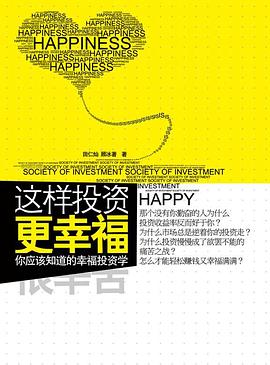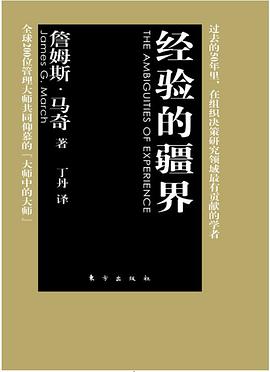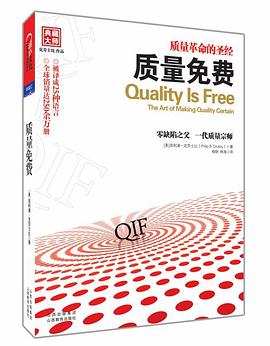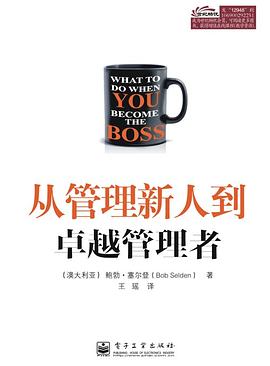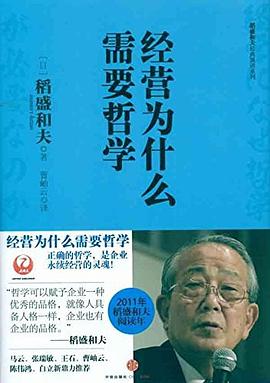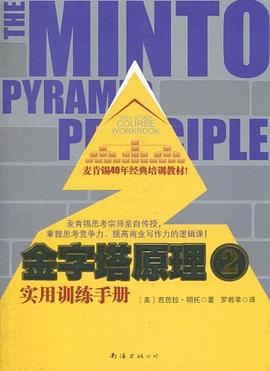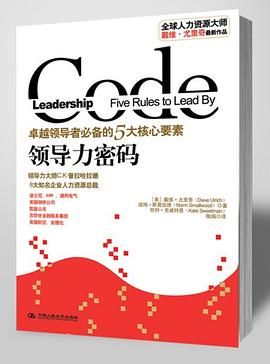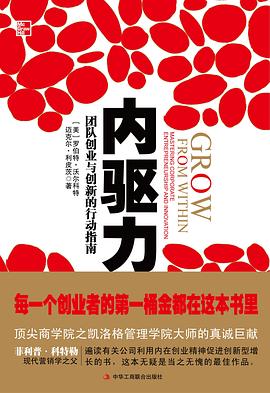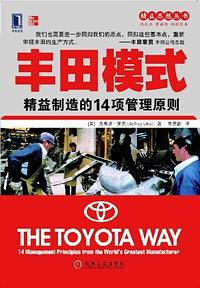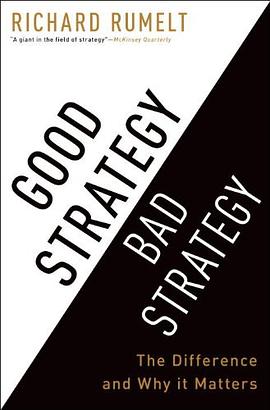

具体描述
Clears out the mumbo jumbo and muddled thinking underlying too many strategies and provides a clear way to create and implement a powerful action-oriented strategy for the real world
Developing and implementing a strategy is the central task of a leader, whether the CEO at a Fortune 100 company, an entrepreneur, a church pastor, the head of a school, or a government official. Richard Rumelt shows that there has been a growing and unfortunate tendency to equate Mom-and-apple-pie values, fluffy packages of buzzwords, motivational slogans, and financial goals with “strategy.” He debunks these elements of “bad strategy” and awakens an understanding of the power of a “good strategy.”
A good strategy is a specific and coherent response to—and approach for overcoming—the obstacles to progress. A good strategy works by harnessing and applying power where it will have the greatest effect in challenges as varied as putting a man on the moon, fighting a war, launching a new product, responding to changing market dynamics, starting a charter school, or setting up a government program. Rumelt’s
nine sources of power—ranging from using leverage to effectively focusing on growth—are eye-opening yet pragmatic tools that can be put to work on Monday morning.
Surprisingly, a good strategy is often unexpected because most organizations don’t have one. Instead, they have “visions,” mistake financial goals for strategy,
and pursue a “dog’s dinner” of conflicting policies and actions.
Rumelt argues that the heart of a good strategy is insight—into the true nature of the situation, into the hidden power in a situation, and into an appropriate response. He shows you how insight can be cultivated with a wide variety of tools for guiding your
own thinking.
Good Strategy/Bad Strategy uses fascinating examples from business, nonprofit, and military affairs to bring its original and pragmatic ideas to life. The detailed examples range from Apple to General Motors, from the two Iraq wars to Afghanistan, from a small local market to Wal-Mart, from Nvidia to Silicon Graphics, from the Getty Trust to the Los Angeles Unified School District, from Cisco Systems to Paccar, and from Global Crossing to the 2007–08 financial crisis.
Reflecting an astonishing grasp and integration of economics, finance, technology, history, and the brilliance and foibles of the human character, Good Strategy/Bad Strategy stems from Rumelt’s decades of digging beyond the superficial to address hard questions with honesty and integrity.
作者简介
(美)理查德·鲁梅尔特, 《经济学人》评他为“当今25位对管理理念和公司行为最具世界影响力的思想家之一”。
麦肯锡公司则将其形容为“战略中的战略家”。
他是加州大学洛杉矶分校约翰·安德森管理学院教授,在著名的欧洲工商管理学院任教多年。他为全球知名跨国公司担任管理咨询,以其多年的企业管理咨询和研究经验,提出关于战略管理的深刻见解,帮助企业理清思路,迎接挑战。
目录信息
读后感
The kernel of a strategy contains three elements: a diagnosis, a guiding policy, and coherent action. - 问大企业的领导们,贵领域领先企业的策略是什么样的?一般回答是看准某个机遇,准确出击。但是问贵司的策略是什么样的?领导们的回答就是些有的没的。为什么不用类...
评分我赞同一句话,“战略来源于战争”,在中国的古代如此,在外国的古代也是如此。因此,我特别关心历史中的一些瞬间,尤其是战争当中的战略。 不信的话,我们一起来看两个例子。 第一个,是国外的,著名的汉尼拔。汉尼拔是迦太基的将军,迦太基位于突尼斯。迦太基和罗马有夙愿...
评分1 战略工作的核心工作:发现关键问题,设计一个合理方案,并集中力量采取行动处理这些关键问题。 2 坏战略往往逃避令人头疼的细节和焦点问题,忽视选择和集中,试图同时照顾到多种冲突的诉求和利益。 3 领导者的责任是判断哪个方面的路径是最有效的,然后集中整个企业的知识...
评分1 战略工作的核心工作:发现关键问题,设计一个合理方案,并集中力量采取行动处理这些关键问题。 2 坏战略往往逃避令人头疼的细节和焦点问题,忽视选择和集中,试图同时照顾到多种冲突的诉求和利益。 3 领导者的责任是判断哪个方面的路径是最有效的,然后集中整个企业的知识...
评分这样表述,因为李叫兽的推荐读了此书,叫兽对于战略的理解看得出受此书影响深刻。 这本书讲述的好战略归结就是三点: 1.要分析形势,认清竞争优势和态势,了解竞争对手。 2.制定统一的指导方针。 3.统一连贯性的活动。 我读到的很多意思是,这很多时候适用的是一种竞争激烈或...
用户评价
极佳,说明了什么才是战略,而不是"你以为的战略",而且有很多案例剖析,这已经足够(可惜并无做战略的方法). 老一代PM认为心理学、经济学是必读,我觉得战略才是PM必读(尤其是中、大公司工作半年以上) 简单来说,这本书让我变聪明了
评分目前为止读过的最好的战略书籍。
评分翻来覆去讲述可以更短篇幅概括的要点,案例归因让人难以信服,很多案例的成功都是多因素的。总的来说诚意不足。
评分能写得更短。
评分很有启发~
相关图书
本站所有内容均为互联网搜索引擎提供的公开搜索信息,本站不存储任何数据与内容,任何内容与数据均与本站无关,如有需要请联系相关搜索引擎包括但不限于百度,google,bing,sogou 等
© 2025 book.quotespace.org All Rights Reserved. 小美书屋 版权所有


